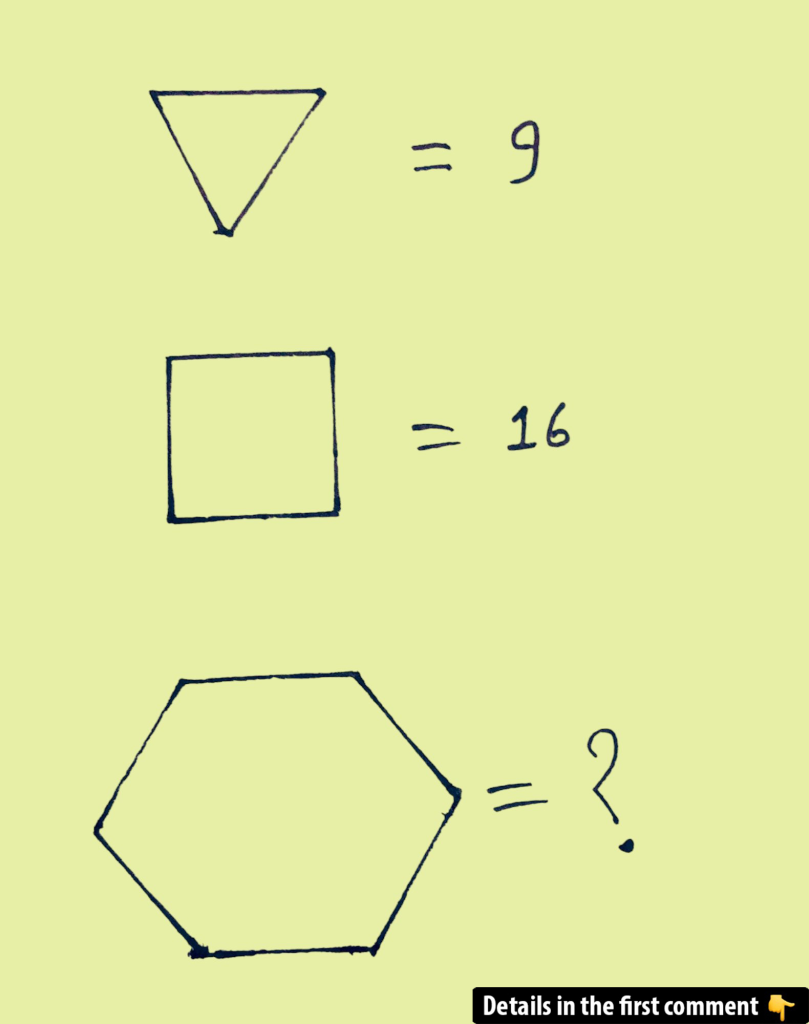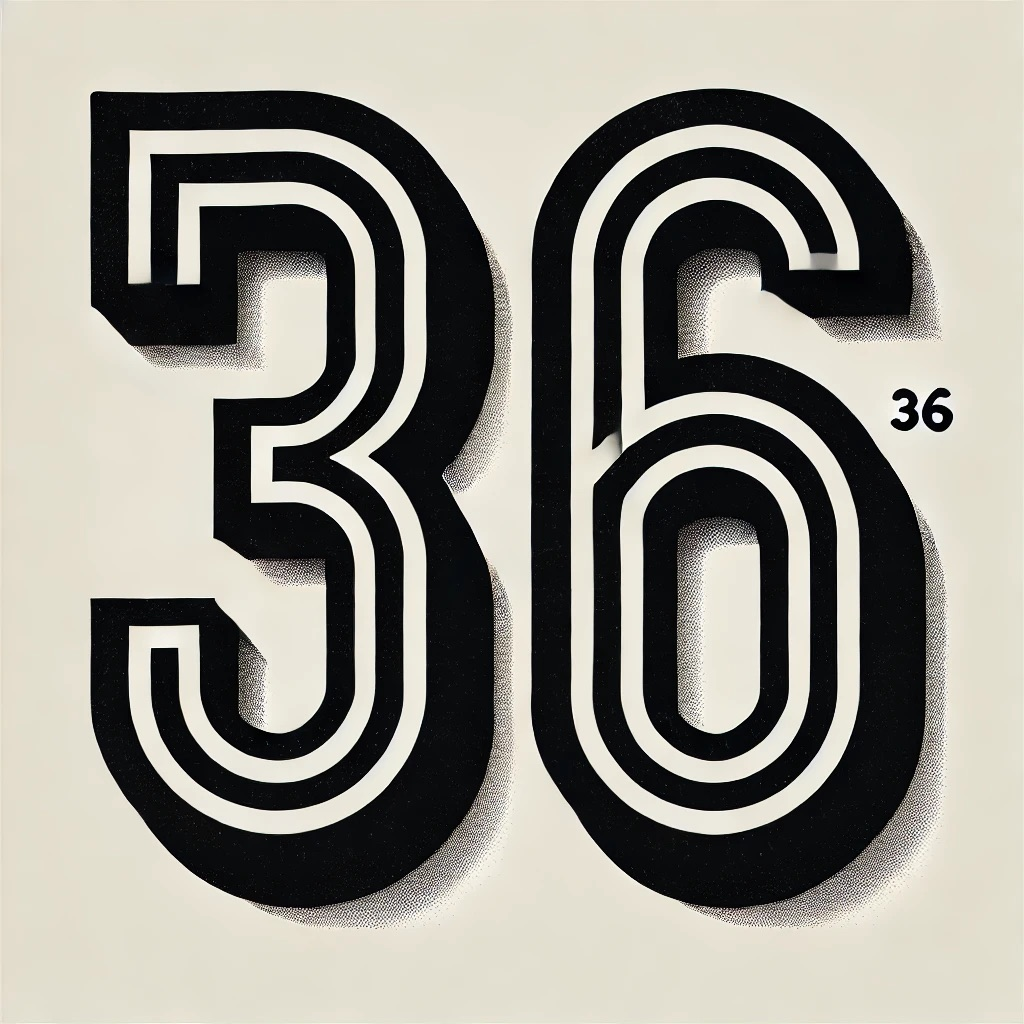Have you ever found yourself staring at a seemingly simple puzzle, only to realize that cracking it requires more brainpower than you thought? Puzzles like these challenge your logical thinking and pattern recognition skills. Today, we’re diving into a riddle that’s both clever and thought-provoking. Ready to test your wits? Let’s explore this intriguing number riddle and break down the solution step by step!
Imagine a series of shapes—triangle, square, and hexagon—each associated with a specific number. Your mission is to identify the missing number for the hexagon. Sounds simple, right? But there’s a catch! You’ll need to spot the hidden pattern and understand the reasoning behind it. Let’s get started!

The Challenge: Spotting the Pattern
The puzzle presents three shapes: a triangle, a square, and a hexagon. Each shape is linked to a number. Your task is to figure out the missing number for the hexagon by analyzing the given pattern.
Here’s a breakdown of the shapes and their associated numbers:
- Triangle (3 sides) = 9
- Square (4 sides) = 16
- Hexagon (6 sides) = ?
At first glance, it might seem random, but there’s a clear mathematical relationship here. The key is to focus on the number of sides each shape has. Once you grasp the logic, the answer becomes evident.
Video: 10 Math Games That’ll Boost Your Brain Power By 80%
Common Mistakes People Make
When faced with puzzles like this, people often fall into a few common traps. Let’s address these mistakes before diving into the solution:
- Overthinking the Shapes: Many people get caught up in the geometric properties, such as angles or area. In reality, this puzzle doesn’t require complex geometry.
- Ignoring Simple Patterns: Sometimes, we look for complicated solutions when the answer is straightforward. Don’t overcomplicate things!
- Focusing on Visuals Instead of Logic: Shapes can be distracting. Instead, think about the basic characteristics—in this case, the number of sides.
Now that we’ve cleared that up, let’s find the solution by breaking it down step by step.
Step 1: Start with the Triangle
Let’s analyze the triangle first:
- The triangle has 3 sides.
- The number associated with it is 9.
What could be the relationship here? Simple: Multiply the number of sides by itself.
- 3 × 3 = 9
That’s it! The number 9 is the result of squaring the number of sides.
Step 2: Move to the Square
Next, we have the square:
- The square has 4 sides.
- The number linked to it is 16.
Applying the same logic:
- 4 × 4 = 16
Again, it’s the square of the number of sides. Are you seeing the pattern yet? The puzzle is based on squaring the number of sides.
Step 3: Solve for the Hexagon
Now comes the hexagon:
- The hexagon has 6 sides.
- To find the associated number, square the number of sides:
- 6 × 6 = 36
The missing number for the hexagon is 36. Simple, right? Once you spot the pattern, the answer falls into place.

Why This Pattern Makes Sense
This puzzle plays on the mathematical concept of squaring numbers. The creators used familiar shapes with a clear number of sides to make it more visually engaging. However, the real trick is recognizing that the numbers aren’t random—they’re calculated using a simple formula.
By squaring the number of sides, you generate the correct answer. It’s a clever way to mix geometry with basic math, making you think differently about everyday shapes.
The Psychology Behind Number Puzzles
Why do these puzzles stump so many people? It’s because our brains are wired to look for patterns, but we often expect them to be more complex than they really are. When presented with shapes, it’s easy to focus on visual elements rather than mathematical logic.
This puzzle, like many others, teaches us to strip away distractions and focus on the core concept. In this case, it’s all about understanding the mathematical relationship between the number of sides and the resulting value.
How Puzzles Enhance Your Thinking Skills

Solving puzzles like this one isn’t just a fun mental exercise—it’s also great for improving your problem-solving abilities. Here’s how tackling such challenges benefits your brain:
- Boosts Critical Thinking: You learn to approach problems from different angles.
- Enhances Pattern Recognition: Identifying relationships between elements sharpens your analytical skills.
- Improves Memory: Recalling mathematical concepts and applying them enhances cognitive function.
- Promotes Creative Thinking: Sometimes, solving puzzles requires thinking outside the box.
By regularly engaging with puzzles, you train your brain to be more adaptable and quick-thinking. Plus, it’s just plain fun!
Challenge Your Friends: Share the Puzzle!
Now that you’ve cracked the code, why not challenge your friends? Share this riddle with them and see if they can figure out the pattern as quickly as you did. It’s a great way to spark conversations and maybe even a little friendly competition.
Encourage your friends to think logically rather than getting distracted by the shapes. Sometimes, the simplest solution is the most elusive. After all, it’s not about being a math genius—it’s about being observant and thinking critically.
Conclusion: Puzzles as a Mental Workout
Puzzles like this number riddle remind us that problem-solving often involves cutting through unnecessary details to find the heart of the problem. In this case, the trick was recognizing the simple pattern of squaring the number of sides.
The next time you encounter a tricky riddle, remember this one and think about how sometimes the answer is right in front of you. Stay curious, challenge your mind, and never shy away from a good mental workout. Who knows? You might just discover a knack for cracking even the most perplexing puzzles!


